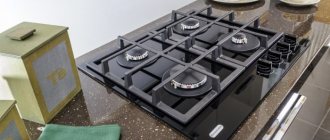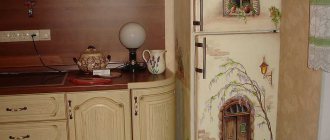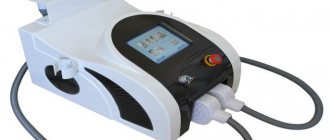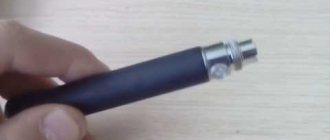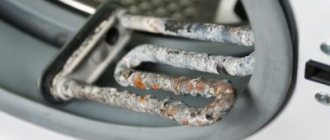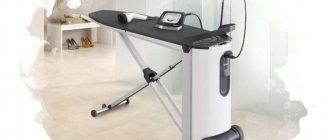What kind of coffee grinders are there?
Coffee grinders are divided into:
- Rotary (rotary) or knife, as they are also called.
- Millstones.
- Manual.
The first two varieties are electric, but their operating principles are different. The manual device is more reliable, but requires time and effort to grind the products. It is very difficult to grind coffee beans by hand - you need the coffee grinder to have a comfortable handle and not cause calluses during daily use.
Important! Coffee grinders are designed for coffee beans, so you can grind other products in them with great care, following the instructions. If the device is under warranty, the service will refuse to repair it for free, since the user himself caused damage to the electrical device.
Manual coffee grinders
Such devices can often be seen in souvenir shops and gift departments. Despite its “frivolity” in comparison with its industrial “relatives”, a manual coffee grinder has proven itself well.
It will take 15 to 20 minutes to get the fragrant powder that collects in the drawer. The grains are processed using the already known millstone method.
In a manual coffee grinder, the main thing is the strength of the handle and the quality of all components of the device. Given the degree and frequency of loading, they must withstand the pressure exerted on them.
In addition to the household coffee grinders described above, there are professional units for restaurants and bars.
If you decide to purchase a coffee grinder for yourself or as a gift, first study the information on the Internet using articles or reviews to get the necessary information before purchasing.
How it works and where to use the rotary
The principle of operation of a rotary coffee grinder is to quickly move the knives - one or two, depending on the model. There are removable and non-removable knives. In the second case, they cannot be removed and cleaned, so you need to use them carefully and only within the limits of what is permitted.
Products that are placed in a knife grinder are cut. This is the advantage of the rotary device - more aromatic substances remain in small particles, since they are not compressed, but dissected. Essential oils also remain inside.
What can you do with this type of coffee grinder? The coffee grinder is intended for grains and spices, as well as:
- cereals that are low in fat, such as oatmeal or buckwheat;
- breadcrumbs;
- pieces of chocolate, but you need to act impulsely so that the device does not overheat and melt the sweets;
- flax seeds, sesame seeds;
- nuts, but not walnuts, as they contain a lot of fat.
If products contain oil, they are partially crushed so that the pieces are larger and the liquid fraction does not flow onto the coffee grinder bearing.
A rotary coffee grinder is not designed for powdered sugar - this can damage it forever. Why you can’t grind sugar in a rotary coffee grinder: the crystals quickly melt when heated, turning into caramel. Burnt sugar drips onto the internal parts of the device and hardens on them. The knives will no longer be able to rotate, especially if the device is non-separable.
What can you grind in a rotary coffee grinder?
The most common option for home use is an electric coffee grinder with rotary, that is, rotating blades. Another name for such a coffee grinder is a knife grinder. This is a fairly simple and compact device, the design of which includes one or two cutting blades. Depending on the price category, they can be either removable or stationary. If you are planning an unintended use that goes beyond the preparation of coffee powder prescribed in the instructions, then it is preferable to opt for the first configuration.
Important! Models with fixed knives are difficult to clean. Therefore, foodies are not advised to use them for anything other than the immediate task. This precaution is due to the tendency for foreign odors to accumulate, as well as food particles stuck in hard-to-reach places. This may not have the best effect on the taste of the future drink.
Principle of operation
The operating principle of rotary coffee grinders is based on the rotational action of steel blades, which are produced at one speed, cutting the coffee beans . In this case, the size of the fraction depends on the exposure time: the longer, the finer. The device is activated by interval pressing of the button on the lid. Thus, you can independently adjust the grinding amount.
However, you should be careful not to burn the coffee, as during prolonged operation the mechanism becomes very hot and can char the contents of the container. This can be determined by the haze emanating from under the lid, as well as the excess bitterness of the brewed coffee.
Alternative uses
As for alternative use, it is not advisable to immerse high-density products in the knife model, such as lump sugar, rock salt huddled in dense piles, as well as certain varieties of legumes. Unlike a millstone, a rotary coffee grinder does not grind food, but cuts it, which allows you to preserve more essential oils and juices. Therefore, this feature should be regarded as an advantage when grinding dried fruits and vegetables, as well as spices.
It should be noted that devices with knives do not allow achieving uniform grinding. On the one hand, this is well suited for the described operations, allowing the flavor of dry fruits to be revealed, but on the other hand, this is unacceptable in the preparation of infant formula, where uniformity is important. This method of grinding will also not be beneficial when it comes to preparing coffee and coffee drinks in special machines.
Among other things, a blade coffee grinder can be used as a blender due to its similar operating principle. Rotary knives are great for whipping purees. The basic rule is not to place large fruits whole. It is better to first cut them into equal pieces.
Grinding rules
To maximize all the benefits of a rotary mill, you should adhere to certain rules.
- It is necessary to work in intervals, alternately pressing and releasing the start button, so as not to burn the food.
- Do not place food that is too hard into the container, as chopping may cause the knives to become dull.
- Rotary coffee grinders use a single container to grind and store the ground product, so you should be careful when removing the resulting substance from the machine - you can injure yourself on the blades.
- Since there is only one container, you cannot store chopped food in it, because the longer it is there, the more odors are absorbed, and the more difficult it is to get rid of them in the future.
- The previous rule especially applies to coffee: the tube of a rotary coffee grinder is not sealed and is not suitable for storage, since the signature aroma quickly evaporates.
- In models of this type, there is no possibility of adjusting the amount of the required substance at the output, so it is better to initially place the raw materials in them in the volume that will be immediately used.
Advice: if a coffee grinder is purchased as a universal tool, then you should consider models with replaceable knives. Ideally, buy two separate devices: one for coffee, the second for everything else.
The principle of operation of millstones
Millstone devices have a different operating principle. Two rollers rotate towards each other and everything that falls between them is crushed. The degree of grinding depends on how close the millstones are set. If you often make Turkish coffee at home, set the grind to the finest setting. For other products, such strong grinding may not be useful.
There are two types of millstones - conical and cylindrical. The first ones cope with all products, do not overheat, do not overcook them. The latter can be more finely tuned for coffee, but it is not advisable to add all other ingredients. Firstly, the smell remains, and secondly, the particles stick between the millstones and interfere with their normal operation.
What can you grind in a burr coffee grinder:
- cereals;
- seeds;
- beans - coffee and cocoa, as well as peas and beans;
- crackers;
- sea salt;
- spices;
- dry herbs.
Very hard components should not be ground with millstones - this will cause their edges to wear off and fail.
What products can be ground in a knife grinder?
There are two types of ingredients that can be ground in a blade coffee grinder:
- dry;
- fatty.
In the first case, the device successfully copes with the task. In the second, you need to act more carefully: press the start button pulsed. This way the motor does not overheat. The coffee grinder for nuts and spices is used in economical mode.
How prohibited to use
An electric blade coffee grinder for powdered sugar is not used so that you don’t have to buy a new one. It is advisable to dry the cereals before chopping so that they do not stick to the knives and internal parts - this way you can extend the service life of the device.
Someone tries to beat cold whites in a knife coffee grinder, although it is not intended for liquid products at all and after this procedure it immediately breaks or burns out.
Poppy seeds, which are ground for kutya, contain a lot of fat. It is difficult to grind them efficiently in a rotary device - for this there are special hand-held devices - grinders.
The principle of action is rubbing poppy seeds. Is it possible to grind nuts in a coffee grinder if it is a blade grinder - it is possible if the knives are then removed, washed and dried. If the model is non-separable, it is better to use a blender.
“The need for invention is cunning”
And what not is ground in a coffee grinder! For ease of use, grind sea salt. After all, the smaller it is, the easier it is to dissolve. Grind dried vegetables, fruits and berries without seeds. Cocoa beans are ground to make the drink.
Delicious recipe! Why are pickled cucumbers pre-simmered for pickle?
What is Kolivo without poppy seeds? True, grinding it in a mortar is a rather troublesome and time-consuming task, but you can grind poppy seeds for kutya in a coffee grinder in a matter of seconds. Some users even manage to beat egg whites in a coffee grinder!
What can be put into a millstone device?
What can you grind in a burr coffee grinder besides coffee beans:
- Spices – chili, black pepper, cinnamon sticks, vanilla, cardamom, mustard seeds.
- Seeds – flaxseed, sesame, sunflower, pumpkin.
- Horseradish and garlic in dry form.
It is recommended to heat the spices a little in a frying pan or in the oven to warm up the essential oils - then they will be more fragrant.
Is it possible to grind grain with a coffee grinder? Yes, it has little fat and is dry enough to stick to the parts. The cone model, which is often chosen for cereals and coffee at the same time, copes with any product.
Is it possible to grind nuts if the millstones are conical: it is possible, since they do not overheat, but immediately go into the compartment for crushed products. If you frequently grind walnut kernels, you will have to disassemble and clean the millstones more often, especially if they are metal, so as not to rust.
What can't be crushed
Components that are too hard should not be placed into the millstones. These can be seeds to make a tincture for treatment. Sharp edges can even damage metal if you frequently grind prohibited ingredients.
Each device comes with instructions that tell you what can and cannot be put into this particular device. Considering the cost of millstone devices, and they are several times more expensive than rotary ones, it is recommended to find the section regarding products in the instructions and study it well.
To determine whether it is possible to grind cereals in a coffee grinder, you need to know the power of the device. It may only be intended for coffee beans. Even among coffee, there are varieties that are much harder than others, as they grew in mountainous areas with low oxygen levels. These are expensive varieties and require a more powerful grinding device.
Manual device for grinding food
Is it possible to make powdered sugar in a coffee grinder if it is manual? It is in manual models that this can be done safely. The rotation speed of the knives is low, so the crystals do not overheat, melt or turn into caramel. The process takes longer, but the powdered sugar in the coffee grinder turns out crumbly. It is also possible to check the degree of grinding.
In addition to grinding sugar, manual models have many advantages:
- The coffee powder can be adjusted to any grind level.
- The grains do not overheat and do not become bitter when cooked.
- One bookmark is enough for one serving so that essential oils do not oxidize in the air.
The cost of a manual coffee grinder is quite affordable, and replacement parts are on sale - if necessary, you can buy replacement knives.
How to grind coffee without a coffee grinder
A blender is a universal device that can be used instead of a coffee grinder. For a blender to cope with grains, it must have 4 blades, at least 2, but then the degree of grinding will be coarse.
This powder is not suitable for Turkish coffee - you will have to brew and infuse it to make the drink invigorating. The fact is that caffeine is extracted better and faster if the coffee is ground into dust.
There are several negative aspects when using a blender as a coffee grinder:
- you need to close the container, otherwise the grain will scatter throughout the kitchen;
- knives wear out quickly - they will have to be sharpened.
As an option, you can use a coffee blender temporarily, for example, while the coffee grinder is being repaired.
A meat grinder is the second way to grind grains. It is advisable that it be used only for grains. Knives are selected for the finest grinding. Both manual and electric models are suitable.
A hammer, as well as a bag and a towel, can grind grain just as well as a blender. This method will work temporarily: put the coffee in a bag and wrap it in a towel, then tap it well with a hammer. The grinding will be uneven, but it is quite suitable for a French press or geyser coffee maker.
Which is better - a blender or a coffee grinder?
These two devices are designed for different actions, so you can replace one with the other temporarily. It’s better to have both in your household than to buy and constantly use, for example, a blender. Repairing knives or buying new ones will cost more.
It is better to use a coffee grinder for cereals less often, but grinding wheat or oatmeal in a blender will be faster and safer. The same goes for nuts and sugar.
The best coffee grinder - selection criteria and characteristics
Everyone knows that “proper” coffee can only be brewed from freshly ground beans, and the time between grinding and preparing the drink should be minimal, otherwise the aroma will quickly disappear.
What should you pay attention to when choosing a coffee grinder so that the process is pleasant, the machine lasts a long time, and the quality of the ground coffee is ideal?
Grinding system (coffee grinder type)
Using a rotary coffee grinder, you can grind the beans to a powder, but the grinding will be uneven, the essential oils will not be fully released, and the quality of the coffee will be average. But if you are using a geyser or drip coffee maker, then this type of coffee grinder will suit you best.
Millstone electric coffee grinders do not crush or cut the grains, but grind them evenly. The drink turns out aromatic, with a rich taste. But if you are a fan of Turkish coffee, then such a unit will not provide you with the finest grind.
Do you want to enjoy the process and make coffee the old fashioned way? Then opt for a manual model. The coffee powder will be aromatic, but have large fractions, which is not suitable for preparing some recipes, such as espresso.
Power
When choosing any electrical appliances, we are accustomed to focusing on power. The higher it is, the higher the rotation speed. But a coffee grinder is not a washing machine or a vacuum cleaner; it does not need much power. Moreover, high speeds can only do harm - the coffee beans will heat up and give the drink an unwanted bitterness.
To grind coffee for one or two cups, 130 W is enough for you. For a large family of coffee lovers, choose coffee grinders with a power of 140 - 170 W.
Rotary devices need higher levels - 220 W.
Capacity (maximum grinding dose)
This indicator should be selected based on your needs. The bowl capacity varies from 50 to 500 grams. If you make coffee for two in the morning, then you will need no more than 20-30 g.
Many models of burr coffee grinders are designed for a 250-gram pack of beans, which is poured once, and the required amount is ground daily. In this case, you need to make sure that light does not fall on the coffee beans.
As for rotary coffee grinders, the less grain you add, the better and more uniform the grinding will be.
Adjusting the grinding degree
Currently, there are dozens of coffee recipes. Each of them requires coffee powder of a certain grind - from large fractions to powder. It is for this reason that it is best to choose a coffee grinder in which you can pre-set the degree of grinding powder.
As practice shows, you should not overpay for a machine that has 16 or 24 grinding variations. 3 to 5 degrees will be enough for you.
Material of millstones (knives)
With a rotary coffee grinder, everything is clear - the knives are made of strong, high-quality steel. But the material of the millstones is of great importance for many coffee lovers.
Metal. Presented in three variations.
- Stainless steel is light and inexpensive, but quickly deteriorates.
- Stainless steel with titanium coating retains its lightness, increases strength and durability, but the cost of the device increases significantly.
- Cast iron millstones are reliable and have a long service life, but the material is porous and absorbs the odors of previous grinding well, and this can negatively affect the taste of the drink. In addition, cast iron wears off easily, and the coffee takes on a metallic taste.
Caring for such millstones must be very careful. They must be protected from moisture, otherwise they will quickly oxidize and rust.
Ceramic. The best material, far superior to metal in its properties. The millstones are durable, grinding grains longer, but with better quality. One of the disadvantages is fragility.
Stone. Of course, this is not a natural stone, but an alloy of ceramics and corundum. Strong, durable, provide good grain grinding. Just like pure ceramic ones, they can easily break when hit or dropped.
Additional functions
Any manufacturer strives to attract customers by improving products. What “goodies” can be awarded to coffee grinders?
- Double knives in rotary models allow you to increase the grinding speed.
- During prolonged continuous operation, protection against engine overheating is triggered.
- If the lid is open, the device does not turn on - finger safety is ensured with a bang.
- Button for automatic cord winding.
- Rubberized feet to eliminate vibration and provide good grip on the table surface.
- If a pebble or other debris hits (this also happens), the blocker is triggered, the engine stops, and the millstones remain safe and sound.
- High-quality sound insulation will provide only a slight buzz, which is very important in the morning when one of the household members is still sleeping.
- Sleep timer. You can set the time in seconds, but calculating them is inconvenient, or indicate the number of cups that you are going to brew now and at once.



